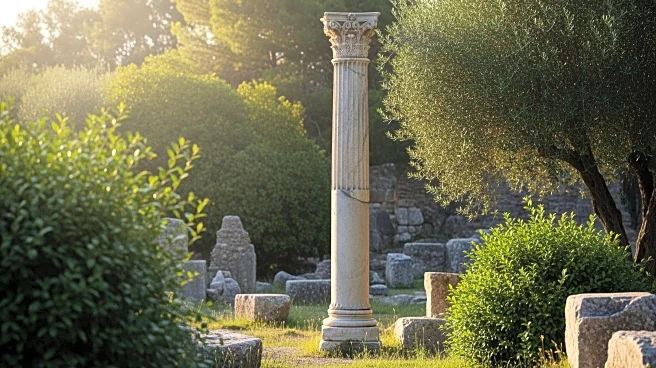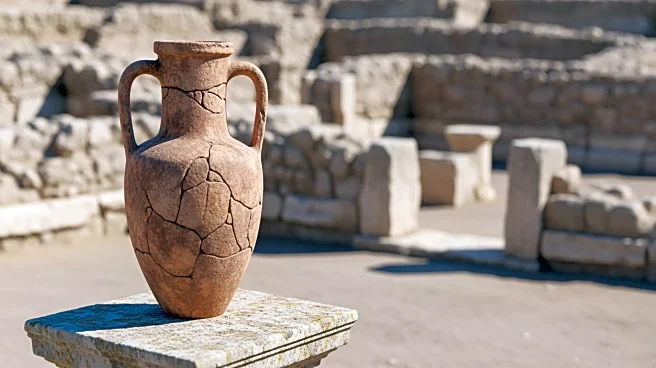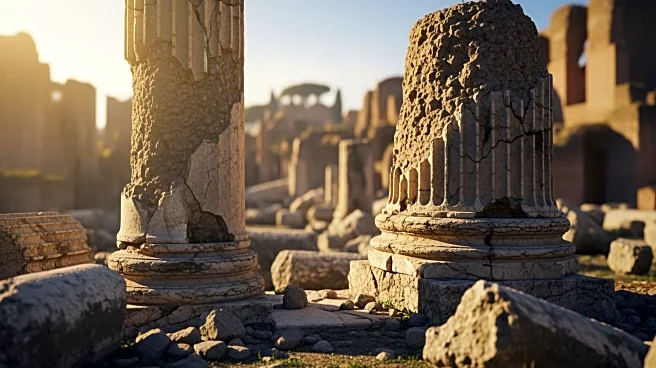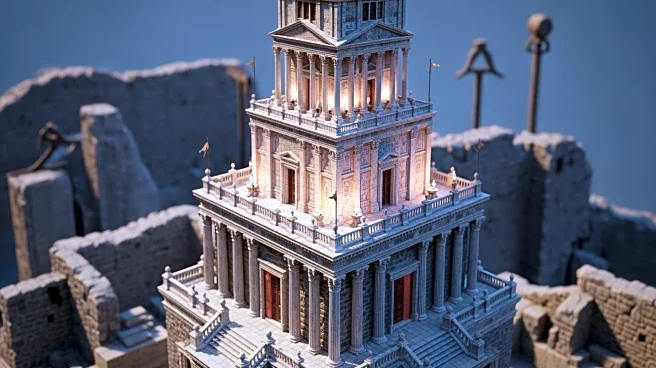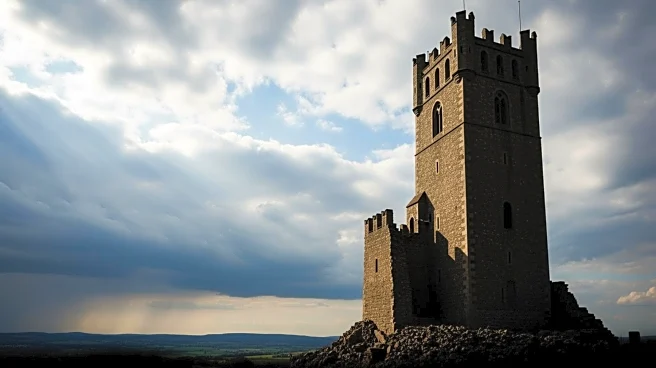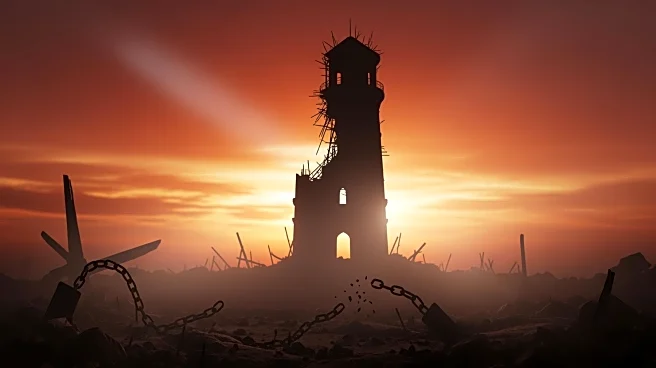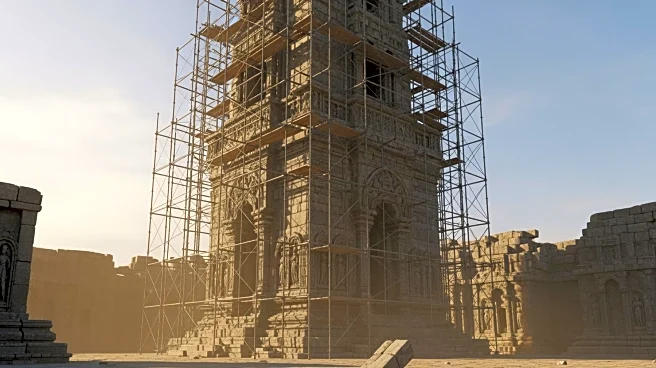What's Happening?
Archaeologists have uncovered the ruins of Gabii, an ancient city located approximately 11 miles east of Rome. The discovery includes a massive stone basin dating back over 2,000 years, believed to be one of the earliest examples of large-scale Roman
public architecture. The site, excavated by a team from the University of Missouri, reveals insights into the cultural and architectural influences between Rome and Gabii, highlighting the city's historical significance as a rival to Rome. The basin, estimated to have been constructed around 250 B.C., reflects the blend of local traditions and Hellenistic culture that characterized the region during that period.
Why It's Important?
The discovery of Gabii's ruins provides valuable insights into the early development of Roman architecture and urban planning. It highlights the cultural exchanges between Rome and its neighboring cities, offering a glimpse into the historical dynamics that shaped the Roman Empire. The findings contribute to a deeper understanding of the socio-political relationships and architectural advancements of the time. For historians and archaeologists, this discovery is crucial in piecing together the narrative of Rome's rise to power and its interactions with surrounding communities. The excavation also underscores the importance of preserving and studying ancient sites to uncover the complexities of past civilizations.
What's Next?
Further excavations are planned for 2026 and 2027 to explore additional structures and artifacts at the Gabii site. Researchers aim to uncover more about the city's layout and its role in the broader context of Roman history. The ongoing study will likely reveal more about the daily lives of Gabii's inhabitants and their interactions with Rome. As the excavation progresses, it may also provide new perspectives on the architectural innovations and cultural exchanges that influenced the development of Roman society.
